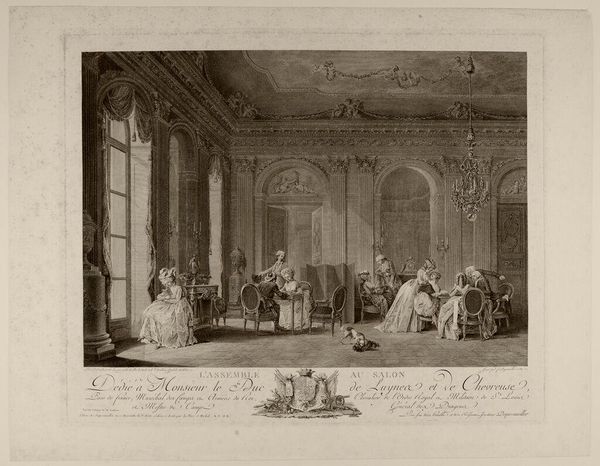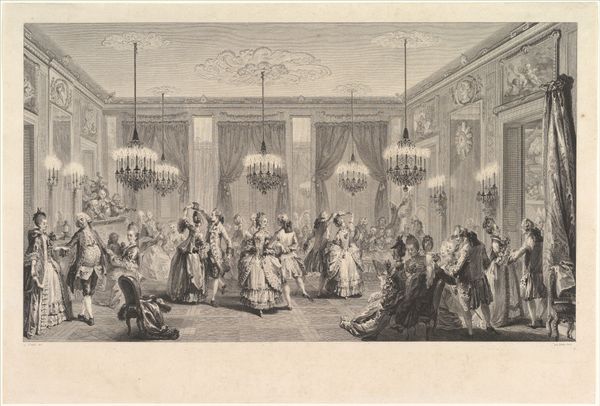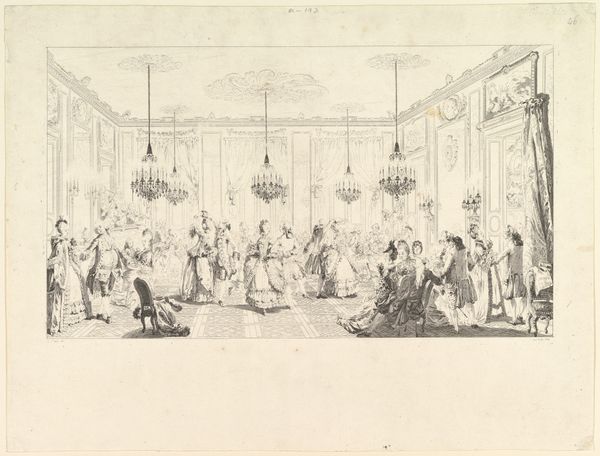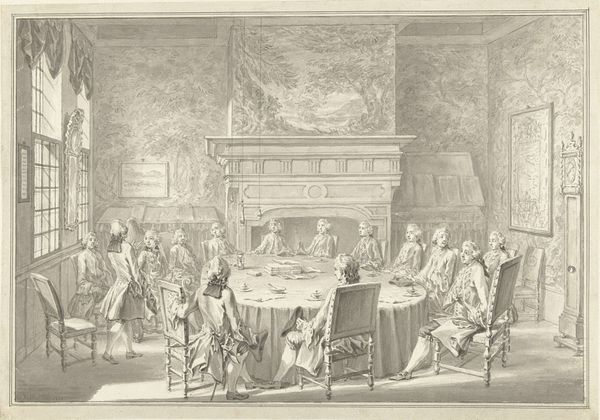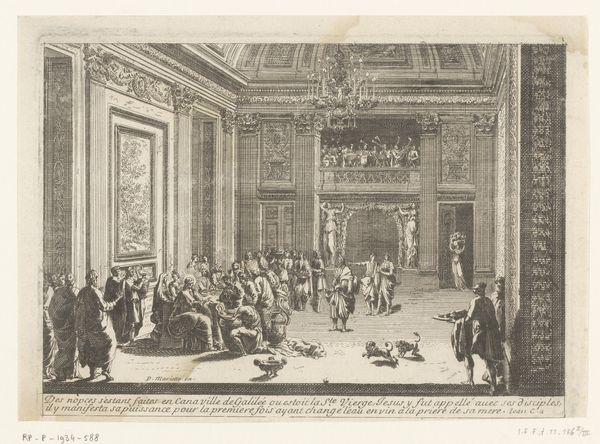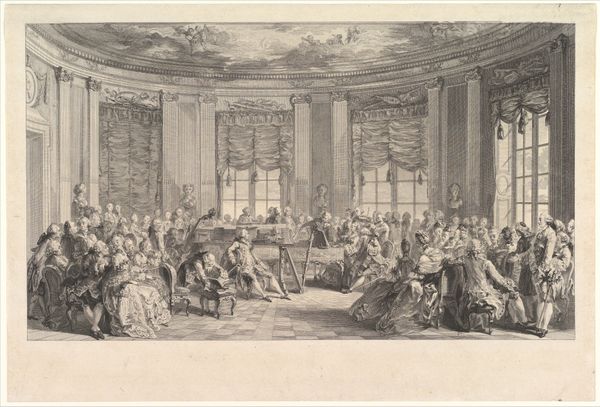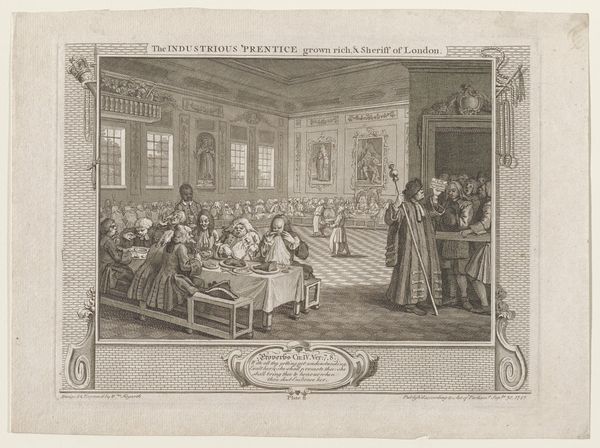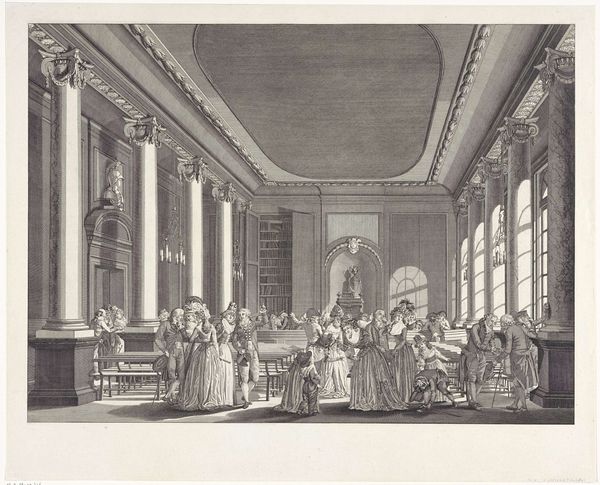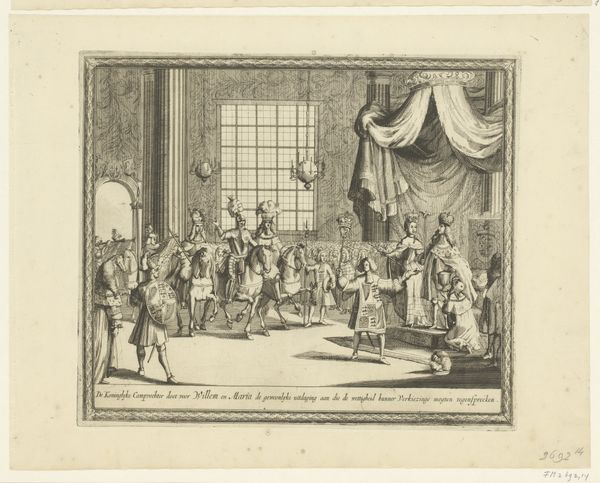
Dimensions: 295 × 418 mm (image); 365 × 480 (plate); 384 × 501 (sheet)
Copyright: Public Domain
Editor: This is Antoine Jean Duclos' "Bal Paré (The Jewel Ball)," from 1774. It's an etching and engraving on paper, offering a glimpse into what looks like a very opulent gathering. What cultural codes can you unlock from this intricate depiction of a Rococo ball? Curator: An excellent question. This image is awash in symbolic messaging about class and the social mores of the French court. The carefully choreographed dances, the elaborate costumes—every detail speaks to a rigid hierarchy. Look at the chandeliers, they’re practically symbols of enlightenment ideals. Editor: Enlightenment? But wouldn’t the extravagance contrast with Enlightenment ideals of rationality? Curator: Exactly! And therein lies the tension. It is a visual paradox, revealing the conflicting desires of the time. The pursuit of reason alongside an indulgent culture. Does that contrast spark other observations? Editor: It does now that you point it out! Perhaps the detail emphasizes a longing for permanence amid immense change. It almost feels like nostalgia captured in real-time. Curator: A keen observation. Nostalgia wasn’t just sentimentality but a potent political tool. These images curated a vision of French identity in a period of looming upheaval. The ball represents so much: status, aspiration, and perhaps, denial. What do you take away from considering these points? Editor: I guess I hadn't realized how loaded a seemingly simple scene could be, how it's brimming with all this context. It definitely opens up how I might interpret other works, realizing every object carries history within it. Curator: Precisely. It’s about deciphering those hidden stories, recognizing that images, like language, are imbued with cultural meaning.
Comments
No comments
Be the first to comment and join the conversation on the ultimate creative platform.
